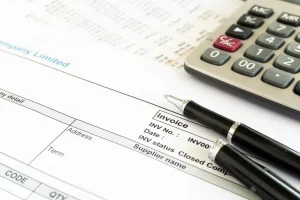Cross-Border E-Commerce Accounting and Tax Considerations: What You Need to Know
2 min read
Let’s be honest—selling across borders is exciting. One minute you’re shipping to a customer down the street, the next, your products are landing in Tokyo or Berlin. But here’s the deal: with great expansion comes great… paperwork. Taxes, duties, accounting quirks—they sneak up fast if you’re not prepared.
Why Cross-Border Taxes Are a Beast of Their Own
Unlike domestic sales, cross-border transactions juggle multiple tax jurisdictions. Imagine playing chess on three boards at once—that’s international e-commerce accounting. Miss a move, and penalties pile up.
Key Pain Points Sellers Overlook
Ever heard of “permanent establishment” rules? Many haven’t—until a foreign tax authority knocks. Common blind spots include:
- VAT/GST registration thresholds: Selling €10,000 in France? Congrats, you might owe VAT.
- Duty classifications: That “handcrafted wooden bowl” could face a 12% tariff in one country, 6% in another.
- Currency conversion: Revenue in yen, expenses in dollars—accounting software doesn’t always play nice.
Tax Compliance: Country by Country
Tax laws shift like sand. Here’s a snapshot of regional quirks:
| Region | Biggest Headache | Pro Tip |
| European Union | VAT OSS scheme (One-Stop Shop) | Register once for all EU sales—saves 27 separate filings. |
| United States | Sales tax nexus rules | Storing inventory in a state? You’ve likely triggered taxes there. |
| Australia/New Zealand | Low-value import thresholds | GST kicks in at just AUD 1,000 for overseas sellers. |
The VAT Trap (And How to Dodge It)
Value-Added Tax isn’t optional—it’s enforced globally. Say you sell €50,000 annually to Germany. Without a VAT ID, customs holds shipments until taxes are paid. Ouch. Solutions?
- Use marketplace collection (Amazon handles EU VAT for FBA sellers).
- File quarterly returns via a local agent.
- Consider DDP shipping (Delivered Duty Paid)—customers won’t face surprise fees.
Accounting Hacks for Global Sellers
Your QuickBooks setup won’t cut it here. Try these:
- Segment revenue by country—use tags like “CA-EU” or “US-Export.”
- Automate tax calculations with tools like Avalara or TaxJar.
- Reconcile weekly—exchange rates fluctuate, and so do your numbers.
When to Hire a Specialist
DIY works—until it doesn’t. Red flags:
- You’re audited by a foreign tax office (yes, they can do that).
- Profit margins shrink mysteriously (hidden duties?).
- You’re spending 20+ hours/month untangling tax codes.
A good international accountant pays for themselves. Fast.
The Future: What’s Changing?
Governments are cracking down. Trends to watch:
- Digital tax certificates (India’s e-way bill, Brazil’s Nota Fiscal).
- Real-time reporting—Spain already demands monthly VAT submissions.
- Marketplace liability—eBay and Etsy now collect taxes in 40+ countries.
Bottom line? Cross-border commerce isn’t slowing down—but neither are tax laws. Staying compliant isn’t just about avoiding fines; it’s about scaling without surprises.








